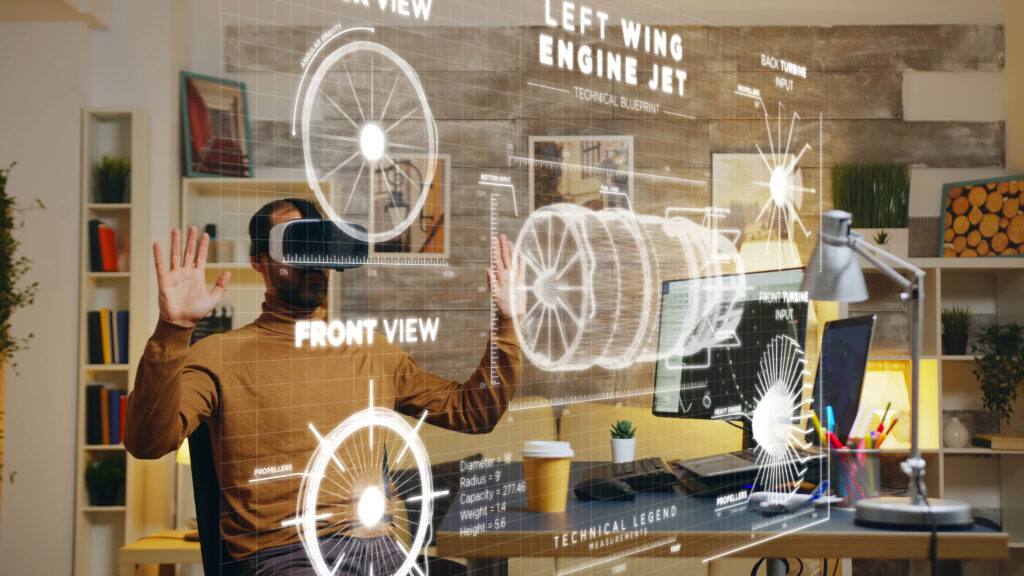Understanding 6 Key Differences Between Virtual Reality and Augmented Reality

Today’s technology is emerging at an unconventional speed that has changed the world at an unprecedented pace. Today, We are surrounded by technology in all forms, which has made us much more equipped for different situations and circumstances. Technology has bridged the global gap and made the world closer. It has transformed how we perceive solutions, build products, or determine experiences. The two technologies that have significantly garnered attention in recent times Augmented Reality (AR) and Virtual Reality (VR) have the potential to transform any industry. From entertainment and gaming to ecommerce, these two technologies are used everywhere to enhance experience, make distinctions and prompt a better user experience. These two technologies are often used interchangeably but are significantly different.
As businesses and individuals harness the power of AR and VR, it becomes imperative to understand the nuances of these technologies in detail. AR and VR are at the forefront of the upcoming technological revolution to add value to how we interact with the digital world. These immersive technologies are here to make a difference and lead the way for the future, so let’s dissect six key distinctions between these world-class technologies to unravel their unique applications and advantages.
The Impact of Augmented and Virtual Reality on Various Industries and Businesses
Let us dive deeper into the world of AR and VR to understand these technologies better, their use cases and their application in the real world.
- Definition and Purpose
Virtual Reality is an entirely immersive digital experience shutting on all the elements of the physical world and transports users to a simulated environment. It replaces all the elements of a material world with a computer-generated 3D environment that can be experienced with a VR headset. A head-mounted display and controllers are often used for a better VR experience. Users are entirely isolated from the real physical environment and fully engrossed in the virtual space. VR applications have made their way into gaming, training simulations and immersive storytelling.
Augmented Reality (AR), on the other hand, does not replace the physical environment but rather overlays digital content onto the real world. This enhances users’ perceptions and reality of the environment that an individual is in. The major distinction between AR and VR here is that AR doesn’t replace the physical elements but supplements it instead for a better user experience. It is an interactive form of technology that can be accessed on smartphones, tablets or AR glass that is often used in marketing, education or navigation.
- User Interaction and Environment
VR is an entirely immersive digital experience, and it isolates users from the physical world. Interaction is majorly through VR devices/controllers, gestures or haptic feedback, enabling users to navigate, manipulate objects and engage with the virtual world.
AR overlays the objects of the virtual world into the physical world, allowing users to engage with their physical surroundings. AR enhances the real world by adding digital elements to it. AR is usually touch-based and can be controlled by a device camera and gesture controlled.
- Use Cases and Applications
VR is predominantly being used in industries that need to provide a completely digitally immersive experience and is making its way into the gaming, aviation, medical, and virtual tours industries at a rapid speed. It also makes a remarkable difference in therapy, education and architectural visualization.
AR has a broader range of applications and has made the unimagined possible for a range of industries that include retail (virtual try ons), navigation (real-time directions), education (interactive textbooks and learning), marketing (augmented packaging, print materials), navigation (augmented GPS) and so on. Additionally, it has revolutionized social media with filters and provides engaging user experiences like never before.
- Hardware Requirements
As VR is a completely digitally immersive experience that doesn’t take into consideration the physical elements of the real time environment requires specialized gear like VR headset or goggles. These gears are generally expensive and may not be easily accessible.
AR, on the other hand, is an interactive technological experience that takes into consideration the real-time environment of an individual. It can be easily accessed on smartphones and tablets.
- Development Ecosystem and Expertise
VR App Development Company: For any business that wants to harness the power of VR, it is crucial to partner with a specialized VR app development company. VR app development mostly involves 3D modeling and rendering. These companies possess specialized knowledge in creating immersive environments leveraging technologies like Unity or Unreal Engine.
AR App Development Company: AR app development is mostly about computer vision, object recognition and geolocation. If any industry or business wants to apply the power of AR to provide better functionality and digital experiences, it is crucial to collaborate with an AR app development company. The companies are skilled to blend digital elements with the real-world using technologies like ARkit and ARcore.

Schedule a call to know more about AR/VR Applications and the cost to create the App.
- Integration with Marketing and Customer Data Platform
Efficient and Cost-effective Solutions to Solve Your Problems with Augmented Reality (AR/ VR) Services
In this technology-driven world, it is imperative to understand a clear distinction between AR and VR, use cases, and applications in the real world. AR and VR have become indispensable for any business today to innovate and to harness their full potential. From immersive digital campaigns, gaming modules, innovating marketing strategies to transformative training modules, AR and VR are here to shape a new future. Choosing the most appropriate technology as per the needs of the business and partnering with the right AR/VR app development company in the USA is essential for the best use of these technologies. Not only just gaming or medical but Salesforce Marketing Cloud Consulting and Salesforce CDP Implementation can complement AR and VR applications by enhancing customer engagement and data management. As AR and VR continue to evolve, their impact on industries across the board is set to expand, making them exciting areas to watch in the coming years.
Recent Posts
-
Key Considerations for Hiring Expert Software Developers
-
A Comprehensive Guide to Augmented Reality (AR) App Development
-
Unleashing Business Potential: Achieving Massive Outcomes with Big Data Analytics Services
-
Leveraging Salesforce Customer Data Platform (CDP) to Understand and Engage Customers
-
What are the benefits of using virtual reality solutions?






